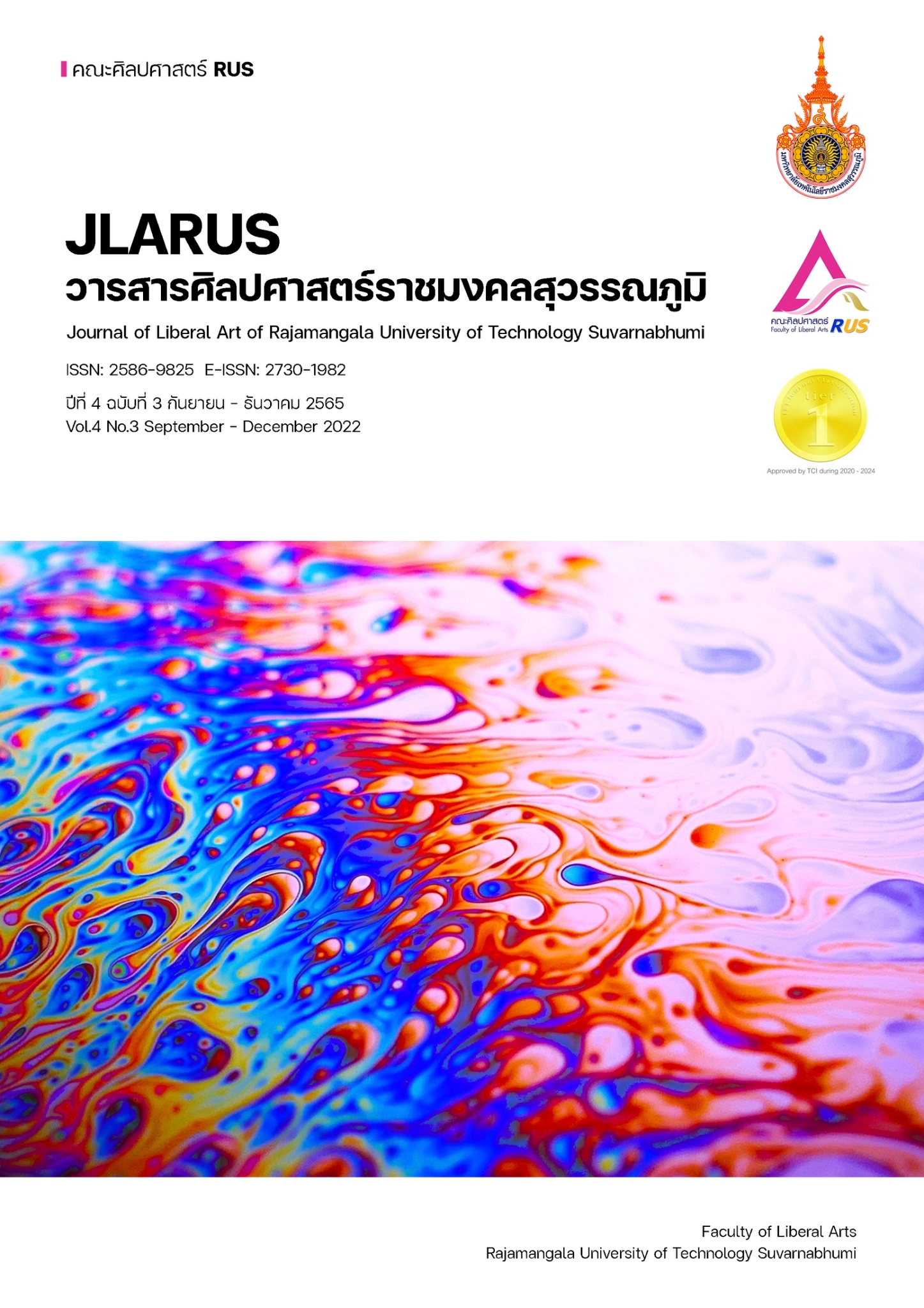ความต้องการจำเป็นของการส่งเสริมการร่วมรู้สึกของผู้บริหารสถานศึกษา สังกัดสำนักงานเขตพื้นที่การศึกษามัธยมศึกษาปราจีนบุรี นครนายก
Main Article Content
บทคัดย่อ
การวิจัยนี้มีวัตถุประสงค์เพื่อศึกษา1) สภาพปัจจุบันและสภาพที่พึงประสงค์ของการส่งเสริมการร่วมรู้สึกของผู้บริหารสถานศึกษา สังกัดสำนักงานเขตพื้นที่การศึกษามัธยมศึกษาปราจีนบุรี นครนายก และ 2) ความต้องการจำเป็นของการส่งเสริมการร่วมรู้สึกของผู้บริหารสถานศึกษา กลุ่มตัวอย่างที่ใช้ในการวิจัย คือ ครูสังกัดสำนักงานเขตพื้นที่การศึกษามัธยมศึกษาปราจีนบุรี นครนายก จำนวน 334 คน ได้มาจากการสุ่มตัวอย่างแบบแบ่งชั้นภูมิ เครื่องมือที่ใช้ในการวิจัย คือ แบบสอบถามแบบตอบสนองคู่ การวิเคราะห์ข้อมูลโดยใช้สถิติในการวิจัย ได้แก่ ค่าเฉลี่ย ส่วนเบี่ยงเบนมาตรฐาน และการจัดลำดับความต้องการจำเป็น (PNI Modified ) ผลการวิจัยพบว่า 1) สภาพปัจจุบันของการส่งเสริมการร่วมรู้สึกของผู้บริหารสถานศึกษา มีค่าเฉลี่ยโดยรวมอยู่ในระดับปานกลาง และสภาพที่พึงประสงค์ของการส่งเสริมการร่วมรู้สึกของผู้บริหารสถานศึกษา มีค่าเฉลี่ยโดยรวมอยู่ในระดับมากที่สุด และ 2) ความต้องการจำเป็นของการส่งเสริมการร่วมรู้สึกของผู้บริหารสถานศึกษา ตามการจัดลำดับความต้องการจำเป็นมากที่สุด ได้แก่ (1) ด้านอารมณ์ (2) ด้านความคิด (3) ด้านคุณธรรม (4) ด้านพฤติกรรม ตามลำดับ
Article Details

This work is licensed under a Creative Commons Attribution-NonCommercial-NoDerivatives 4.0 International License.
References
กนกกร ศิริสุข. (2557). ภาวะผู้นำใฝ่บริการที่ส่งผลต่อการปฏิบัติงานของผู้บริหารสถานศึกษา สังกัดสำนักงานเขตพื้นที่การศึกษาประถมศึกษาในจังหวัดสงขลา (วิทยานิพนธ์ปริญญามหาบัณฑิต). สงขลา: มหาวิทยาลัยราชภัฏสงขลา.
จิณห์จุฑา ชัยเสนา ดาลลาส. (2558). ความเข้าอกเข้าใจ:พลังเพื่อพัฒนาวิชาชีพพยาบาล. วารสารพยาบาลกระทรวงสาธารณสุข, 25(2), 13.
ภัทราวดี มากมี. (2558) ความสามารถในการเข้าใจความรู้สึกผู้อื่น ของนักเรียนชั้นมัธยมศึกษาตอนปลาย การวิเคราะห์กลุ่มพหุ. วารสารวิจัยและพัฒนามหาวิทยาลัยราชภัฎสวนสุนันทา, 8(3), 91.
วัลลภา สถิรพันธุ์. (2558). ผลของการใช้ละครเชิงสังคมที่มีผลต่อการเข้าใจความรู้สึกผู้อื่นของเด็กอนุบาล (วิทยานิพนธ์ปริญญามหาบัณฑิต). กรุงเทพมหานคร: จุฬาลงกรณ์มหาวิทยาลัย.
วิจารณ์ พานิช. (2555). วิถีสร้างการเรียนรู้เพื่อศิษย์ในศตวรรษที่ 21. กรุงเทพมหานคร: มูลนิธิสดศรี-สฤษดิ์วงศ์.
ศิริชัย กาญจนวาสี. (2550). สถิติประยุกต์สำหรับการวิจัย (พิมพ์ครั้งที่ 5). กรุงเทพมหานคร: จุฬาลงกรณ์มหาวิทยาลัย.
ศิริธร เรียบสันเทียะ. (2553). ผลของโปรแกรมพัฒนาการเข้าถึงใจตามแนวคิดของโรเจอร์ที่มีต่อการลดพฤติกรรมก้าวร้าวของวัยรุ่น (วิทยานิพนธ์ปริญญามหาบัณฑิต). เชียงใหม่: มหาวิทยาลัยเชียงใหม่.
สำนักงานคณะกรรมการการศึกษาขั้นพื้นฐาน. (2553). คู่มือการประเมินสมรรถนะผู้บริหารสถานศึกษา (ฉบับปรับปรุง พ.ศ. 2553). สืบค้น 30 กันยายน 2564. จาก http://www.kroobannok. com/27638.
สุวิมล ว่องวาณิช. (2558). การวิจัยประเมินความต้องการจำเป็น. กรุงเทพมหานคร: จุฬาลงกรณ์มหาวิทยาลัย.
Batson, C. D., Polycarpou, M. P. Harmon-Jones, Empathy and attitudes; can feeling for a member, L. , Highberger, L. (1997). Empathy and attitudes : Can feeling for a member of a stigmatized group improve feelings toward the group?. Retrieved September 29, 2021. from https://pubmed.ncbi.nlm.nih.gov/9008376/.
Blanchard, K.H. (2006). Leading at a Higher level : Blanchard on leadership and creating high performing organizations. New Jersey: Prentice Hall.
Brower, T. (2021). Empathy Is The Most Important Leadership Skill According To Research. Retrieved September 13, 2021. from https://www.forbes.com/sites/tracybrower /2021/09/19/empathy-is-the-most-important-leadership-skill-according-to-research/?sh=4142194f3dc5.
Burton,J. (2010). WHO Healthy Workplace framework and model: Background and supporting literature and practice. Retrieved September29, 2021. from http:// www.who.int /occupational_health/healthy_workplace_framework.pdf.
Covey, S. R. (1991). Principle-centered Leadership. Retrieved September 29, 2021. from https://static1.squarespace.com/static/5df3bc9a62ff3e45ae9d2b06/t/5e385456f7bd6b4910e3f2cb/1580749911705/Principal-Centred+Leadership.Covey.EBS.pdf.
Dalamore, S. (2021). Detecting empathy in public organizations: Creating a more relational public administration. Retrieved September 15, 2021. from https:// www.researchgate.net/publication/345687168_Detecting_empathy_in_public_organizations_Creating_a_more_relational_public_administration.
Davis, M. H. (1983). Measuring individual differences in empathy: Evidence for amultidimensional approach. Retrieved September 11, 2021. from https://www. researchgate.net/publication/215605832_Measuring_individual_differences_in_empathy_Evidence_for_a_multidimensional_approach.
Draft, R.L. (2001).The Leadership Experience. Retrieved September 21, 2021. from https:// www.studocu.com/en-au/document/university-of-new-england-australia/execu tive-leadership/summary-the-leadership-experience-richard-l-daft/917277.
Edlins, M. (2021). Developing a model of empathy for public administration. Retrieved September 30, 2021. from https://www.researchgate.net /publication/33799 8066_Developing_a_model_of_empathy_for_public_administration.
Ekman, P. (2007). Three kinds of empathy: Cognitive, emotional, compassionate. Retrieved September 17, 2021. from http://www.danielgoleman.info/three-kinds-of-empathy -cognitive-emotional compassionate.
Findley, L. C., Girardi, A., & Coplan, R. J. (2006). Links between empathy, social behavior and social understanding in early childhood. Retrieved September 22, 2021. from https://psycnet.apa.org/record/2006-11665-007.
Goleman, D. (2007). The emotional intelligence of leaders. Retrieved September 11, 2021. from https://onlinelibrary.wiley.com/doi/10.1002/ltl.40619981008.
Gordon, R. D. (1985). Empathy: The State of the Art and Science. Retrieved September 9, 2021. from https://www.researchgate.net/publication /292610562_Empathy_State _of_the_Art_and_Science.
Moorhouse, J. (2002). Comparative analysis of leadership perceptions: study in USA. Tennessee: East Tennessee State University.
Morse, J.M., Anderson G,Bottorff, J.L,Yonge, O., O’Brien,B., & Solberg,S., Mcllveen,K.H. (1992). Exploring empathy: a conceptual fit for nursing practice. Retrieved September 9, 2021. from https://pubmed.ncbi.nlm.nih.gov/1452181/.
Renate, L. E. P., Corcoran, R., Drake, R., Shryane, N. M., & Vollm, B. A., (2011). The QCAE: A Questionnaire of Cognitive and Affective Empathy. Retrieved September 24, 2021. from https://pubmed.ncbi.nlm.nih.gov/21184334/.
Rogers, C. R. (1975). Empathic: An unappreciated way of being. Retrieved September 25, 2021. from https://psycnet.apa.org/record/1975-27723-001.
Sergiovanni, T. J. (1992). Moral Leadership: Getting to the Heart of School Leadership. Retrieved September 25, 2021. from https://eric.ed.gov/?id=ED364965.
Tang K. N. (2012). Paper for seminar on Soft Skills Development for Higher Education Institute. Khon Kaen: Khon Kaen University.

